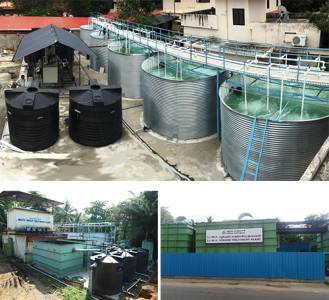Description
Aerobic Treatment: Revitalize Your Wastewater with Nature's Power
Aerobic treatment is a biological wastewater treatment process that utilizes naturally occurring microorganisms in the presence of oxygen to break down organic pollutants. This environmentally friendly solution offers a highly effective and sustainable method for cleaning wastewater from various sources, including:
- Municipal Wastewater Treatment Plants: Effectively remove BOD (Biochemical Oxygen Demand), COD (Chemical Oxygen Demand), and suspended solids, producing cleaner effluent suitable for discharge or reuse.
- Industrial Wastewater Treatment: Tailor-made solutions for specific industrial needs, targeting the removal of pollutants unique to various industries, such as food processing, pharmaceuticals, and textiles.
- Agricultural Runoff Treatment: Reduces the environmental impact of agricultural activities by removing excess nutrients and pollutants before they enter waterways.
- Septic Systems: Enhanced aerobic systems improve efficiency and reduce the need for frequent pumping and maintenance.
How Aerobic Treatment Works:
The process relies on aerobic bacteria and other microorganisms that thrive in oxygen-rich environments. These microorganisms consume organic matter as their food source, breaking it down into simpler, less harmful substances like carbon dioxide, water, and biomass. This process typically occurs within specialized treatment units, including:
- Activated Sludge Systems: A widely used method involving aeration tanks where microorganisms are mixed with wastewater, allowing for efficient oxygen transfer and organic matter degradation.
- Rotating Biological Contactors (RBCs): Media-based systems utilizing rotating discs to provide ample surface area for biofilm growth, where the microorganisms consume organic matter.
- Membrane Bioreactors (MBRs): Combine activated sludge with membrane filtration, resulting in highly efficient treatment and producing exceptionally clear effluent.
- Aerated Lagoons: Large, shallow ponds that rely on natural aeration and microbial activity to treat wastewater.
Benefits of Aerobic Treatment:
- High Efficiency: Effectively removes a wide range of pollutants, resulting in cleaner wastewater.
- Environmental Friendliness: A natural process that minimizes the use of harsh chemicals.
- Reduced Sludge Production: Compared to anaerobic processes, aerobic treatment generates less sludge, reducing disposal costs and environmental burden.
- Odor Control: Properly designed and operated aerobic systems minimize unpleasant odors associated with wastewater treatment.
- Flexibility and Scalability: Available in various sizes and configurations to suit different applications and flow rates.
- Cost-Effective: While initial investment can vary, long-term operational costs can be lower compared to other treatment methods, especially considering reduced sludge management.
Choosing the Right Aerobic Treatment System:
Selecting the appropriate aerobic treatment system depends on various factors, including:
- Wastewater characteristics: Flow rate, pollutant concentration, and type of pollutants.
- Site conditions: Available land area, power supply, and climate.
- Regulatory requirements: Local discharge standards and environmental regulations.
- Budget: Initial investment and ongoing operational costs.
Our Expertise:
We offer comprehensive solutions for aerobic wastewater treatment, including system design, installation, commissioning, and ongoing maintenance. Our team of experts can help you select the optimal system to meet your specific needs and ensure compliance with environmental regulations. Contact us today to discuss your wastewater treatment requirements and explore the benefits of aerobic treatment.
